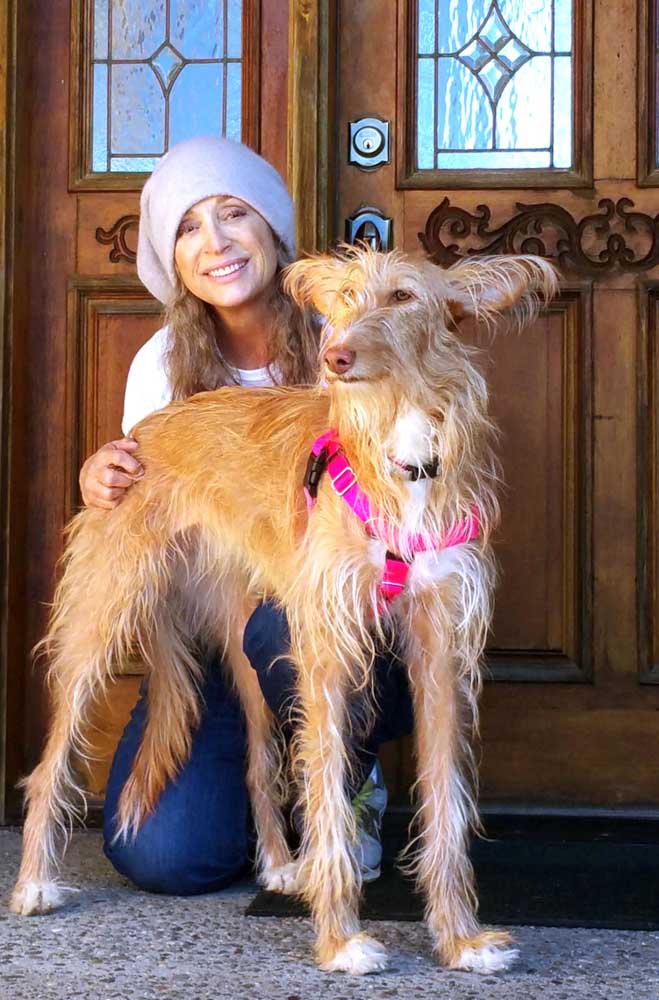Canine Corner: Good training is slow
Published 8:47 am Friday, August 9, 2019

- Rain Jordan of Expert Canine with Dahlia.
In the pairing of humans with their best friends, love means humane training as well as treatment. Love is Humane Training.
In addition to being non-aversive, humane training is slow and methodical, because a methodical, anti-aversive approach implies a patient and kind trainer. “Love is patient, love is kind.” Humane training is slow, humane training is methodical.
Some dogs struggle with basic requirements of being companions to us humans. Having their nails trimmed, for example, is a common struggle.
Many humans are just as afraid to trim our dogs’ nails as dogs are of having their nails trimmed, yet we can learn and thereby spare them the distress of having a stranger — whom our dog might find aversive, thus adding an extra layer of distress — do that work. What follows is an outline of how force-free, pain-free, and therefore reduced-stress nail trimming may be trained. (You’ll want to contact me for full details as it isn’t possible to cover every nuance in this short article.)
General Rules: If you find yourself getting frustrated, tired, or restraining your dog, stop and try again another time. If your dog gets upset, stop and try another time. The goal is to have your dog comfortable and cooperating willingly, not being held down or restrained. S/he will eventually learn it is worth cooperating if the associated food is novel enough (to your dog), tasty enough (meats, cheeses, pates, et cetera), and plentiful. Keep the food hidden in a treat bag attached to your belt or waistband and draw from it as you work. You may prefer to have a partner do the feeding while you do the handling.
Step One: Every day for one to five minutes, handle — touch, pet, and eventually softly hold, while gently manipulating—each of your dog’s paws and each claw. Two seconds after you begin the handling process, start feeding your dog pea-sized or smaller pieces of soft cheese, hot dog, turkey, chicken, steak, hamburger, or other aromatic, super-tasty human food while continuing the handling process. Immediately after you are done handling the paws and claws, then stop feeding and put away the food.
Once your dog is comfortable with Step One, move to:
Step Two: Every day for one to five minutes, show your dog the nail clippers while following the same feeding instructions as above. If the dog is not at all bothered by the sight of the clippers, you may go directly to:
Step Three: Every day for one to five minutes, lightly touch the clipper to each of your dog’s claws, and follow the same feeding instructions as above. Do this daily until your dog accepts the clipper touching every claw with no sign of fear, distress, or avoidance.
Up until now you were beginning each session, then feeding continuously, until the session ended. Next, adjust the method as follows: After every one action you do with the clipper that your dog accepts, deliver one small piece of food to your dog.
Step Four: Practice Session: a/Touch one claw with the clipper. b/Retract clipper. c/Deliver one piece of food to your dog. Repeat a-c for all claws. If no avoidance and no distress, move to pre-clip:
Step Five: a/Place clipper around the tip of one claw but do not squeeze or clip. b/Remove the clipper. c/Deliver one piece of food to your dog. Repeat a-c for all claws. When dog shows no hesitation or stress for any/all claws, move to:
Step Six: Very carefully angle the clipper along only one side edge of a claw as if you were preparing to lay the clipper head down on its side on the side of the paw. This angle helps keep you away from the quick. Aim to slowly, cautiously clip only a sliver shaving of nail edge, working your way around the outside edge of the claw. Deliver one piece of food after each clip — so if it takes two clips per claw — one on each side—then that means two pieces of food per claw. Repeat with other claws only if your dog is not stressed and only if your dog cooperates freely. If your dog shows distress or avoidance, go back a step as this means s/he is not ready for clipping yet.
With slow, methodical practice, both you and your dog will become more comfortable. “Love (and humane training) always protects … always perseveres.”
Visit https://www.expertcanine.com/clipperplacement for more information.
Rain Jordan, CBCC-KA, KPA CTP, is a certified canine behavior and training professional. Visit her at www.expertcanine.com.


